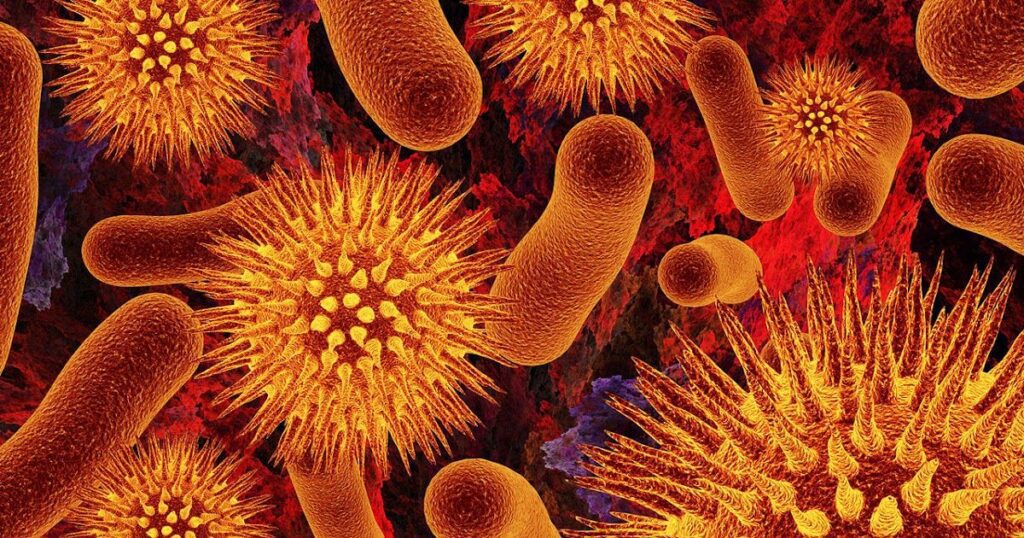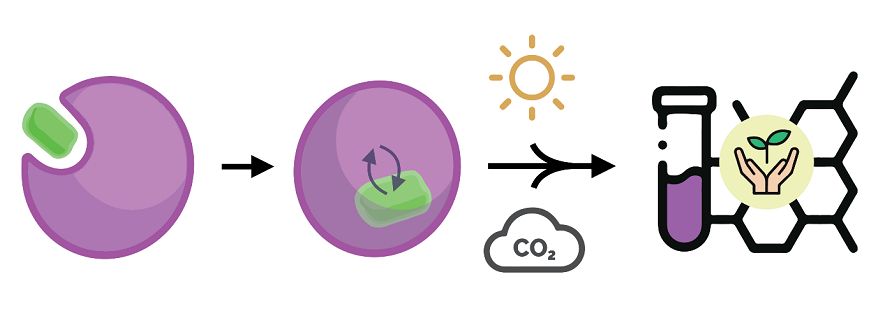Bacteria are tiny living organisms found almost everywhere on Earth. They can grow and multiply very quickly under the right conditions. However, many factors affect how fast or slow they grow. Understanding these factors is important in many fields like medicine, food production, and microbiology.

Summary of the factors affecting bacterial growth
- Bacterial growth depends on factors like temperature, pH, oxygen, moisture, and nutrients.
- Other influences include light, pressure, osmotic conditions, and competing microorganisms or chemicals.
- Managing these factors helps promote useful bacteria or prevent harmful bacterial growth in various fields.
Table of Contents
Factors Affecting Bacterial Growth
The factors that affect the growth of bacteria are :
1. Temperature
Temperature is one of the most important factors for bacterial growth. Every type of bacteria has a specific temperature range in which it can survive and grow.
- Psychrophiles are cold-loving bacteria that grow well at temperatures below 15°C.
- Mesophiles grow best at moderate temperatures, usually between 20°C and 45°C. Most human pathogens fall in this group.
- Thermophiles prefer higher temperatures, above 45°C.
If the temperature is too low, bacteria may stop growing or grow very slowly. If the temperature is too high, it can damage the cell structure and kill the bacteria.
2. pH Level

pH measures how acidic or basic a substance is. Most bacteria grow best in a neutral pH environment (around pH 7). However, some bacteria are adapted to grow in acidic or alkaline conditions.
- Acidophiles grow well in acidic environments (low pH).
- Alkaliphiles grow in basic or alkaline conditions (high pH).
If the pH is too extreme for a specific bacterium, it may not be able to survive or reproduce.
3. Oxygen Availability
Oxygen is another key factor that affects bacterial growth. Bacteria can be classified based on their oxygen requirements:
- Aerobic bacteria need oxygen to grow.
- Anaerobic bacteria grow in the absence of oxygen.
- Facultative anaerobes can grow with or without oxygen but grow better with oxygen.
- Microaerophiles need a small amount of oxygen.
- Aerotolerant anaerobes do not use oxygen but can survive in its presence.
If a bacterium is placed in the wrong oxygen environment, it may die or fail to grow.
4. Moisture
Water is essential for all living organisms, including bacteria. Moisture is needed for bacteria to absorb nutrients and carry out chemical reactions. Without enough water, bacteria cannot grow or reproduce.
This is why drying food or storing it in dry places helps prevent bacterial growth.
5. Nutrient Availability
Bacteria need nutrients to grow. These nutrients include carbon, nitrogen, sulfur, phosphorus, and trace elements like iron and magnesium.
- Carbon is needed for energy and building cell structures.
- Nitrogen is used to make proteins and DNA.
- Phosphorus helps form DNA, RNA, and energy molecules like ATP.
If any of these nutrients are missing or limited, bacterial growth will slow down or stop.
6. Light

Most bacteria do not require light to grow. In fact, strong light, especially ultraviolet (UV) light, can damage bacteria and kill them.
Some bacteria, like photosynthetic bacteria, use light as a source of energy. These bacteria grow best in light, but they are a minority.
7. Osmotic Pressure
Osmotic pressure is related to the concentration of salts or sugars in the environment. When bacteria are placed in a high salt or sugar environment, water leaves their cells, and they shrink. This process is called plasmolysis.
- In salty or sugary environments, bacteria may stop growing.
- Some bacteria, like halophiles, can grow in high salt concentrations.
This is why salt and sugar are used to preserve food, such as salted meat or jam.
8. Presence of Inhibitory Substances
Certain substances can slow down or stop bacterial growth. These include:
- Antibiotics that kill or inhibit bacteria.
- Preservatives added to food to stop spoilage.
- Disinfectants and antiseptics used to kill bacteria on surfaces and skin.
If bacteria are exposed to these substances, their growth will be affected or stopped completely.
9. Competition with Other Microorganisms
In nature, bacteria often live with other microorganisms. These organisms can compete for nutrients, space, and other resources.
Some bacteria produce substances that kill or inhibit other bacteria. This natural competition can influence which bacteria grow and which do not.
10. Time

Time also affects bacterial growth. Under ideal conditions, bacteria can multiply quickly, sometimes doubling every 20 minutes. However, over time, they may run out of nutrients or produce waste products that harm their own growth.
Bacterial growth typically follows four stages:
- Lag phase: bacteria adjust to the new environment.
- Log (exponential) phase: bacteria grow and divide rapidly.
- Stationary phase: growth slows down as resources become limited.
- Death phase: bacteria die as conditions become unfavorable.
11. Surface Area and Growth Medium
The surface or environment where bacteria grow also matters. In laboratories, bacteria are often grown on nutrient agar plates or in liquid broth. The type and quality of the growth medium can influence how well bacteria grow.
- A rich medium with all nutrients will support fast growth.
- A poor or minimal medium will support slower growth.
Also, a larger surface area allows more oxygen exposure for aerobic bacteria.
12. Pressure
Most bacteria grow under normal atmospheric pressure. However, some bacteria live deep in the ocean and are adapted to high pressure.
Barophiles or piezophiles are bacteria that grow in high-pressure environments.
If pressure is too high or too low for a specific bacterium, it may not survive.
Conclusion
Bacterial growth depends on many factors such as temperature, pH, oxygen, moisture, nutrients, and more. By controlling these factors, we can either promote bacterial growth (for useful purposes like yogurt making) or prevent it (to stop infections and spoilage). Understanding these conditions is very useful in healthcare, food safety, and scientific research. Simple changes in environment can have a big impact on how bacteria grow and behave.
FREQUENTLY ASKED QUESTION
What is bacteria?
Bacteria are tiny living organisms that are too small to see without a microscope. They live almost everywhere in the air, water, soil, and even inside your body.
What are the factors affecting the growth of bacteria?
The factors affecting the growth of bacteria include temperature, pH, oxygen levels, moisture, nutrient availability, light, osmotic pressure, presence of chemicals, pressure, and interaction with other microorganisms.
What are the examples of bacteria?
The examples of bacteria include Lactobacillus, Escherichia coli (E. coli), Streptococcus, Salmonella, Bacillus, and Clostridium botulinum.
Related Articles




